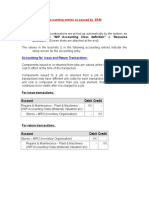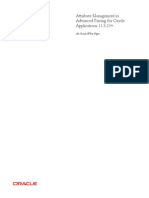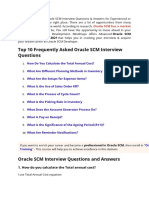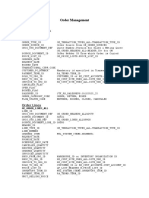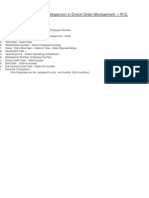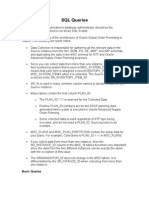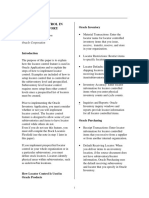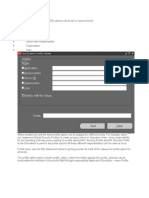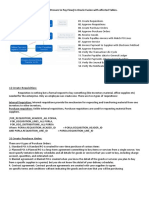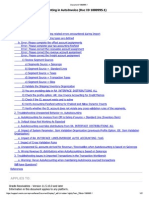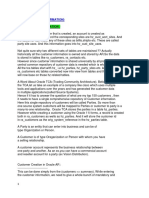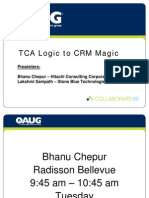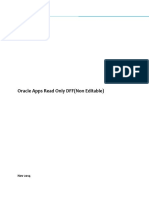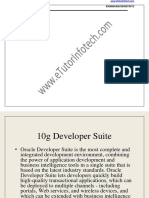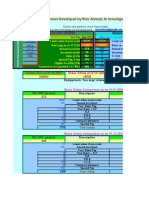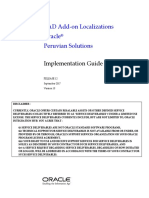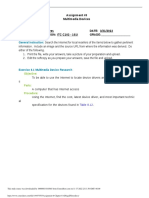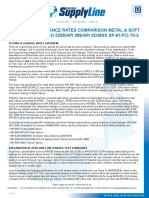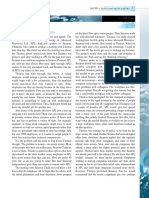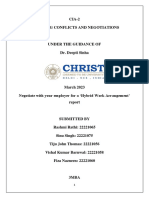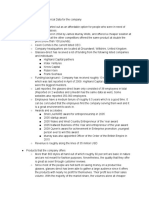0% found this document useful (0 votes)
1K views4 pagesOracle Trading Community Architecture
The document discusses Oracle's Trading Community Architecture (TCA), which is a data model that manages complex information about commercial parties and relationships. The TCA registry is the single source of trading information accessible through Oracle E-Business Suite applications. Key TCA entities include parties, party sites, customers, customer accounts, locations, and contacts. The document also describes new TCA entities in R12 like banks, bank branches, customers, and suppliers.
Uploaded by
Facundo BodnerCopyright
© © All Rights Reserved
We take content rights seriously. If you suspect this is your content, claim it here.
Available Formats
Download as PDF, TXT or read online on Scribd
0% found this document useful (0 votes)
1K views4 pagesOracle Trading Community Architecture
The document discusses Oracle's Trading Community Architecture (TCA), which is a data model that manages complex information about commercial parties and relationships. The TCA registry is the single source of trading information accessible through Oracle E-Business Suite applications. Key TCA entities include parties, party sites, customers, customer accounts, locations, and contacts. The document also describes new TCA entities in R12 like banks, bank branches, customers, and suppliers.
Uploaded by
Facundo BodnerCopyright
© © All Rights Reserved
We take content rights seriously. If you suspect this is your content, claim it here.
Available Formats
Download as PDF, TXT or read online on Scribd
/ 4

